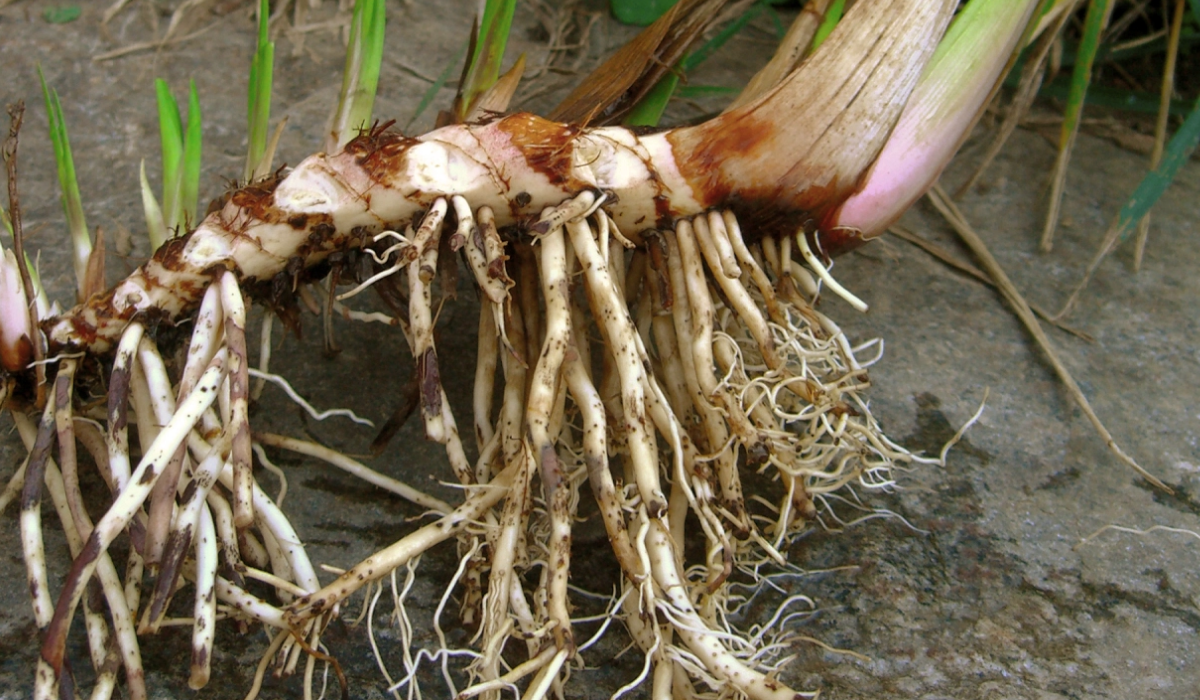
Acorus calamus is an herb that is used in ancient Ayurvedic and Chinese medicine and is known to enhance the cognitive abilities of a human being. Some studies also suggest that the herb has ability to treat neuropathic pain.
The basic mechanism behind the plant revolves around the interaction of the GABAA receptors. In addition to this, β-asarone is also one of the ingredients that are responsible for the mechanism behind the plant.
Studies suggest that the ingredient can be removed from the plant but it will also take away the good properties away from the plant that will render it useless.
The plant is known as bach, calamus oil, golomi, sweet flag, ugragandha, vacha, and vekhanda but is different than acorus gramineus, which is known as Japanese or dwarf sweet flag.
Health benefits of acorus calamus
The acorus calamus has a number of health benefits that can be attributed to the makeup of the plant. It has a number of antibiotic, cephalic, circulatory, memory boosting, tranquilizing substance, anti-rheumatic, nervine, stimulant anti-spasmodic, circulatory, and memory boosting properties. (1)
The health benefits include:
- Cures psychological disorders like depression
- Gives relief from arthritis, gout, and rheumatism
- Hormone secretion in the body
- Prevents epileptic fits
- Prevents hysteric attacks
- Relieve from nervous spasms
- Stimulation of blood circulation
- Stimulation of metabolism
- Treatment of headache
- Treatment of insomnia
The medical uses consist of:
- Sore Throat
- Headache/Migraine
- Congestion
- Colds
- Ayurvedic
- Asthma
- Aphrodisiac
- Amenorrhea
The properties of the plant are:
- Uterine Tonic
- Sedative
- Psychedelic
- Nervine
- Emmenagogue
- Diuretic
- Carminative
- Bitter
- Aromatic
- Antirheumatic
- Antioxidant
- Antibacterial
- Analgesic
- Abortifacient
Acorus calamus has a number of properties that can deal with a number of physical and psychological disorders. However, it is advised that pregnant and breastfeeding women avoid it since it can cause hallucinations and convulsions.
Other than this, even low doses of β-asarone in rats caused organ damage and led to a higher prevalence of intestinal tumor. (2)
Calamus has been in use since ancient times. Earlier on, the plant was used for the benefits that it provided the lungs and the digestive system. It was seen that the plant cleared up the congestion and phlegm, while calming mind.
Other uses involved the treatment of tinnitus, insomnia, heart palpitations, chronic bronchitis, bronchial asthma, and amnesia.
Generally, the oil extracted from the root is used that has a very strong fragrance and tastes bitter. The active ingredients are extracted by boiling water. However, it is reported by several resources that the thick yellow paste is extremely toxic in nature.
In certain parts of Europe, calamus was used as a digestive aid because it helped with conditions like dyspepsia, acidity, and heartburn. The root of the plant was used to cure toothache. (3)
In traditional Chinese medicine, the plant was used to treat problems like dizziness, deafness, epilepsy, abdominal pain, dysentery, and diarrhea. (4)
Ayurvedic medicine used the plant for awareness, circulation to the brain, and to sharpen the memory.
The acorus calamus was taken as tea by people in ancient time. However, consuming the plant for internal use is not recommended, although it can be used externally for circulation and sore muscles.
Side effects of calamus
Prolonged use of acorus calamus has a number of side effects and subjects that took the herb for more than one year, even in low dosage, experienced problems like intestinal tumor and organ damage.
A carcinogenic substance in the plant that is known as β-asarone, has been found to be responsible for these issues.
One case study reported that the intake of the root of the plant with water caused a visit to the emergency room where the subject had yellow liquid like vomit, was in a diaphoric state, and had mild leucocytosis.
The subject was treated with promethazine. (5)
It is recommended that one avoid using calamus due to its toxic content and carcinogenic nature. It can be used externally but it’s best not to consume the plant.
Dosage instructions
Do make it a point to peruse the toxicology information that is available for this product before you take. (6)
Finding from some studies suggest that the herb is not suitable for human consumption because of the presence of β-asarone, an active ingredient that is a known carcinogen and is toxic in nature.
There are studies that show that the plant’s ethyl acetate extraction does not contain any β-asarone. The extraction can be safely taken within the range of 100 to 200 mg per kilogram of one’s body weight. Taking this into account an approximate human dose would consist of:
- 1,100-2,200 mg for a person with a total weight of approximately 68 kilograms.
- 1,500-2,900 mg for a person with a total weight of approximately 91 kilograms.
- 1,800-3,600 mg for a person with a total weight of approximately 113 kilograms.
It is important you know that β-asarone is a known pesticide that is famous for its toxic content. The Council of Europe Committee of Experts in Flavoring Substances evaluated the use of the substance in food flavoring and it was found that the quantity was limited to 0.5mg/kg for beverages with alcohol and 05mg/kg for food. The council determined that the plant was not safe for human consumption because of the nature of β-asarone. Furthermore, it was established by the council that there is no given intake level of the dose.
Summary: There are several sources that suggest that the recommended daily consumption of the drug is 0.115mg (115µg) a day. It has been seem that usage of β-asarone for more than two years results in very high in toxicity levels, which makes it unfit for consumption.
http://bodynutrition.org/calamus/ http://bodynutritionorg.tumblr.com/post/147570132054
No comments:
Post a Comment